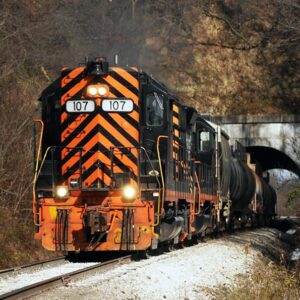When it comes to rail safety, the stakes couldn’t be higher. Pennsylvania recently observed Rail Safety Week, an opportunity for all of us to understand what’s at stake and to take steps to make the rail industry safer, stronger, and more efficient.
Nationally, Rail Safety Week is spearheaded by a group called Operation Lifesaver, Inc. It works alongside state Operation Lifesaver programs and other rail safety and first response partners across the U.S., Canada, and Mexico to raise awareness and promote clear messaging about the importance of rail safety across North America – a true collaboration across national borders.
The theme of Rail Safety Week 2023 was “Stop Track Tragedies.” It’s difficult to overstate just how important that goal is. Like fire prevention, preventing railroad tragedies is the most efficient and effective way to save lives and ensure public and firefighter safety.
The numbers are truly sobering. Every three hours, a train in the United States hits a person or vehicle. More than 2,100 people are injured or killed annually in rail crossing or trespassing incidents across North America.
The firefighters throughout Pennsylvania respond to these fires, collisions, derailments, and hazmat incidents at great personal risk and with the knowledge that exposure to these elements may cause occupational disease or even death.
Track tragedies have impacted communities across the United States, most recently and most severely in Ohio. The disastrous derailment in East Palestine earlier this year has made safety around railroads all the more important to our communities. Rail Safety Week is an important opportunity to take collaborative steps to stop track tragedies.
Railroads, the unions that represent them, and their partners are recognizing this and working diligently to make our rails as safe as they can possibly be. This summer, for example, CSX hosted a multi-day emergency response training exercise in Baltimore, Maryland. The company’s Responder Incident Training (RIT) Train also travels across CSX’s nationwide network, providing first responders with instruction about preparing for and responding to incidents. 40 RIT training events were held in 2022 alone.
Those efforts add to the billions of dollars each year spent on maintaining and preserving tracks, crossings, and bridges – all in an effort to help keep railroads and rail communities safe.
Railroads also make a huge difference through their direct community support and giving. Norfolk Southern, another large national railroad, just launched a new area of giving called “Thriving Communities,” which is an outreach program focused on building relations with communities and responders along rail lines.
Accidents are down from over 12,000 in 1972 to 2,100 last year. We need public-private partnerships, education, and resources to further reduce these tragic incidents.
There’s no question that much work remains to be done to make our railroads as safe as possible. But Rail Safety Week is an earnest effort at uniting all stakeholders to make the sector safer, stronger, and more efficient for all.


